News | June 8th, 2016
On June 14th, voters in the city of Fargo will head to the polls to elect two new City Commission members. Races were close in recent years with hundreds of votes separating the winners. HPR reached out to all 11 candidates running in the race for answers on issues important to our readers. All but one, Matt Keubler, responded by press time. On the ballot this time are Fargo Planning Commissioner Mara Brust, Fargo School Board member John Strand (also of the High Plains Reader), former Cass County Commissioner Scott Wagner as well as community activist Joe Burgum, Fargo school board member Robin Nelson, former State Senator Tony Grindberg, former local Republican party chairwoman Bridget Ertelt, former executive director of the Red River Basin Commissioner Lance Yohe, college student Nealul Andrew and teacher Tammy Linn. Answers were subject to editing on length due to space concerns.
HPR: Some people are worried about increasing crime in Fargo in particular in the downtown area, how concerned are you about it and what would you do as City Commissioner to combat it?
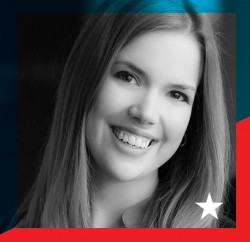
Mara Brust: Our police force must grow with our city. Fargo only has 1.3 officers per 1,000 people, while comparable cities have 1.5. We need to add five officers per year just to keep up with growth. To retain and attract officers, we must provide competitive wages, benefits, and support.
Tony Grindberg: We need to provide that the necessary resources and for the Fargo Police Department to ensure the safety of our residents and visitors. Further, we must gather the statistics and have a conversation with leaders from the Fargo Police Department to gauge their expert opinions to understand the facts then address the issue appropriately.
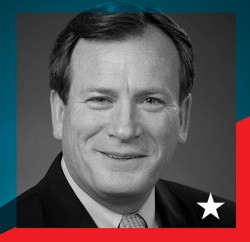
Scott Wagner: We need to make sure people in all areas of our city feel safe. This means assessing current resources to make sure we have adequate coverage of police officers on the street. Business and community watch programs are also a helpful tool to assist law enforcement.
Joe Burgum: We need to continue our support of the Fargo police department as well as look at the causes for crime. I believe that the environments we build, and how we care for them, are what create a vibrant and safe downtown and city as a whole.
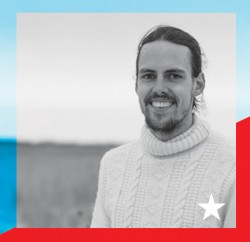
John Strand: Escalating crime downtown is a serious concern. Fargo should step up community policing downtown. Solutions may also include more beat cops, bicycle police, undercover officers and maybe even more camera surveillance. I’d also suggest adding blue light emergency call stations similar to the college campuses.
Robin Nelson: Criminal activity is a concern of many neighborhoods in Fargo, including our downtown area. Much of it is related to drug and alcohol use and abuse. We must provide our police force with sufficient resources and manpower to deal with this concern. As a City Commissioner, that will be a priority for me. The community needs to partner with law enforcement. The street ambassador program initiated by the Downtown Community Partnership is an example of that by adding “eyes on the street”. Concerns have been raised regarding liquor establishments which are not managing the sale of their product in a responsible manner -- causing public safety concerns and additional costs to the taxpayers. The liquor license holders must be held accountable.
 Bridget Ertlet: I would encourage efforts for neighborhood watch programs, promote common sense personal security measures (locking car doors and home doors to deter property theft), work with downtown establishments to promote adequate safety measures for patrons and ensure law enforcement is adequately staffed and positions stay competitive within the region to retain qualified officers.
Bridget Ertlet: I would encourage efforts for neighborhood watch programs, promote common sense personal security measures (locking car doors and home doors to deter property theft), work with downtown establishments to promote adequate safety measures for patrons and ensure law enforcement is adequately staffed and positions stay competitive within the region to retain qualified officers.Tammy Linn: I am concerned about crime not only in the downtown area, but throughout the entire city of Fargo. As a City Commissioner, I will focus on police recruitment and expand the number of officers; retain police officers by ensuring we provide a competitive employment package; engaging the community by offering official “Community Block Watch” programs provided by the Police Department to interested neighborhoods; and work with downtown businesses and the community to coordinate an integrated camera system so that crimes may be recorded and those who commit crimes can be prosecuted.
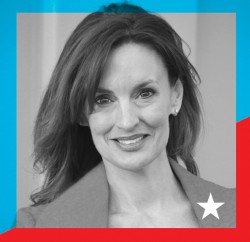
Lance Yohe: I am quite concerned as public safety is one of my 3 top issues. The 16% increase in crime last year (around 75% from robbery and similar type crimes) is related to drug use. Addressing the current opiate related drug problem will help lower the crime rate. We should also increase the staff of the police and fire departments, since both assist with the drug issue and the police also address crime. The current plan of adding staff to both departments over the next 10 years to gradually build them both up to more staff per 1,000 residents will keep Fargo competitive in the marketplace and provide more safety to Fargo citizens.
Nealul Andrew: I'm very concerned and I would do my best to find solutions to decrease the crime rate. I would try many options such as increasing the police force and looking to neighboring cities for similar solutions on how they maintain a low crime rate.
HPR: What does the city need to do to deal with opioid addiction crisis?
Brust: Stakeholders rapidly came together to address this issue and engage the public. Emergency responders now carry Narcan to treat overdoses on the scene. Law enforcement has pledged to channel those with substance addictions into treatment, not prisons. I will work with partners on the state level to fight to ensure that North Dakota provides needed care for those battling substance addiction.
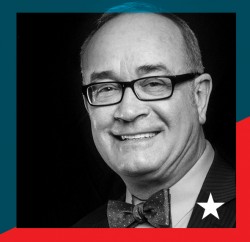
Grindberg: We must place public safety as a top priority and address the rise in drug addiction in our region. I believe we must embrace a zero-tolerance approach, provide increased support for law enforcement and develop a comprehensive plan involving multi-jurisdictional law enforcement combined with parental, citizen, and neighborhood involvement. Further, we must work with our legislative leaders to address increased drug addiction programs to help those recover from drug abuse.
Wagner: We must support law enforcement and provide resources to combat drug trafficking into our city. Criminals need to know it doesn’t pay to deal drugs in Fargo. Addiction is a growing problem so we must improve education and awareness efforts while calling on state leaders and agencies to provide the support and treatment needed to address use and overuse of illegal and prescription drugs.
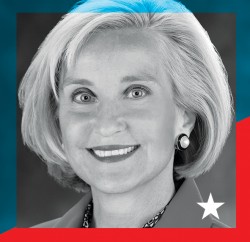
Burgum: It is important that Fargo, Moorhead, West Fargo, Cass and Clay Counties continue to work together to help people dealing with the disease of addiction. Communities both nationally and internationally are dealing with similar issues and we have the opportunity to learn and implement programs that have been successful elsewhere.
Strand: 1) Create formal task force of addiction counselors, treatment centers, medical providers, law enforcement, educators, & leaders to assess capabilities and gaps in our services; 2) Establish an online resource network for users & loved ones; 3) Push for a Methadone medically assisted treatment center; 4) Lobby lawmakers for statutory changes & incarceration reduction; 5) Create a peer support group.
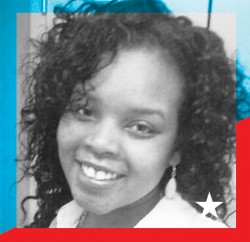
Nelson: Addressing this crisis requires a multi-faceted approach of proactive education, social services, law enforcement efforts, health care and human services. It is the job of city commissioners to ensure law enforcement has the resources it needs, advocate at the state level for more resources to address treatment shortages and actively engage in groups such as the Fargo Community Coalition.
Ertlet: Over-prescribed medication is the contributing factor to the abuse of opioids and consequent addiction. Improvements in the standards of rehabilitation for drug addicts and research for alternative pain management treatment should be welcomed. Continuing education and awareness for drug addiction prevention and treatment encourages community networks committed to providing understanding and support for those affected by these challenges.
Linn: Having lived in Arizona for 25 years and working not only with hundreds of schools, but also as a City Councilman, I have seen programs that work and don’t work to combat addictions. According to Sheriff Laney, the average daily jail population 18 months ago was 187 individuals, today it’s 313. I believe the big increase is related to drugs. In order to address this crisis, we must take a multi-faceted community wide approach: Cops and courts, community, long-term drug rehabilitation and insurance companies.
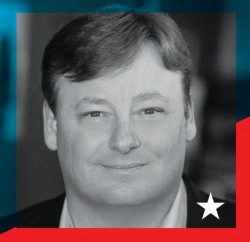
Yohe: The current plan addresses the key areas and should continue and expand as necessary. This plan has 4 parts as follows: 1). Public Outreach to educate and inform the public about the problem and what to be on the lookout for. 2). Reducing access to prescription drugs, by developing communication and data base sharing between Doctors. 3). Training and use of Narcan, by first responders (EMT and Fire Department) to counter Fentanyl and save lives is in progress and needs to be available to all first responders. 4). Movement from Incarceration to Treatment. Extending treatment options, putting individuals into treatment and not jail will benefit society on many fronts.
Andrew: We need to include more rehabilitation centers in Fargo and take this addiction crisis much more seriously. We need to educate the public on this more so that family and friends are aware of what they could do to help those with this addiction.
HPR: What would would you do as City Commissioner to further the arts inthe city? Do we need an arts performance center similar to the ChesterFritz Auditorium in Grand Forks?
Brust: I will bring my experience working with numerous arts organizations and be an advocate for further support of the arts. A performing arts center should be included in the Downtown Master Plan currently being developed. Ultimately, I would like to see an artist employed in city hall, so that every decision is infused with the unique insight of an artist.
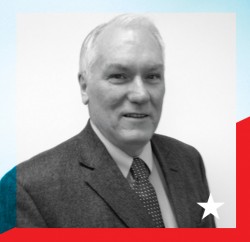
Grindberg: I have been a supporter of the arts for many years. Both as a legislator and as a community volunteer. I was on the board for the Plains Art Museum when we remodeled the present facility in downtown Fargo. I believe that public/private partnership models are a great mechanism for communities. I believe the arts community should develop a plan. Once a plan is defined, then we as a community can determine appropriate next steps to execute a plan that could include a public/private partnership model.
Wagner: The arts definitely add to our quality of life. However, public funds can be very limited. I would look to see where private sector recourses could be leveraged in support of the arts. In regards to a preforming arts center, we have too many other pressing needs at this time that need funding such as permanent flood protection.
Burgum: We need to ensure that the Fargo Arts Master Plan document is one that can be executed on. We must explore the opportunities we have to pool knowledge from across the multiple theater groups and universities in our region to consider best steps in creating a joint performance space.
Strand: Fargo needs to get past putting symphony and operas in gyms. At a minimum, the Civic center could be repurposed to become a performing arts center. As a commissioner I will cultivate an arts-friendly, arts-supportive culture while striving to include local artists as we envision future trends, developments, policies and procedures.
Nelson: A thriving arts and entertainment scene positively contributes to our culture, economy and workforce recruitment – points that our larger community need to understand and embrace. We should not only continue to support local arts organizations, but also explore more capital investment in the arts. Long before I announced my candidacy, I was talking about a convertible performing arts center where the current Civic Center stands. It could be funded with a restaurant tax - Fargo is the only ND city that does not utilize this tax, and restaurants are some of the most direct beneficiaries of a thriving cultural community.
Ertlet: The beauty of art lies in the freedom of expression and setting the example to support them should be done in the same manner. I enjoy the opera and symphony & donate to fundraisers supporting them. On the happy occasion I participate in them. I’m not opposed to a performance center but encourage those projects to be sourced by the private sector.
Linn: A step in the right direction is that in the 2016 city budget, the arts have its own dedicated line item. This helps raise the awareness and importance of the arts. I would ask the Mayor to establish a task force to analyze the viability and funding of an arts performance center. The results would be presented to the Commission. The center could be coordinated with the construction of the City Hall. Plus, we need to encourage private funding opportunities.
Yohe: I believe arts play a significant role in this and any city. We want people to enjoy living here and others to want to come here to live. A performing arts center could be part of this overall approach to provide more focus on the arts for this community. A joint effort between the city, philanthropic funders, and private donors should be explored to determine is a funding package could be realized for such a center while at the same time exploring other strategies that will enhance the overall investment in arts in the community for a healthier place to live thereby increasing the quality of life.
Andrew: I think we need to give the Arts commission more funds so they could have more centers such as that Auditorium in Fargo. We need to support integration of art and make sure that Fargo stays culturally vibrant.
HPR: How concerned are you about gentrification in the city as growth continues at a rapid pace? What can be done to combat it?
Brust: Gentrification is a major concern, especially in our Renaissance Zone. The inclusion of affordable options for housing and small businesses should be a requirement for tax incentives and revitalization initiatives.
Grindberg: My sense is this trend may be linked to the baby boomer demographic who are choosing to downsize from their existing homes. As I drive around the older neighborhoods in Fargo, I have seen numerous examples of homes being refurbished. My sense is homeowners have paid conscious attention to preserve neighborhood integrity.
Wagner: We should respect the integrity of existing neighborhoods within our city. Openness, transparency and mutual respect are critical in dealing with this issue. The city and developers must be willing to work with neighborhoods to find common ground.
Burgum: With over 60 acres of surface parking lots in downtown Fargo, there are abundant infill opportunities to provide attainable residential spaces for people with a diverse range of socioeconomic backgrounds. We need to plan for housing for those creating the culture of our community: artists, bartenders, baristas, and musicians.
Strand: Resurrecting a blighted downtown will always reflect gentrification to some. That said, from a city policy standpoint, when and if public funds, tax incentives or exemptions are used, we need to include minimum criteria requiring affordable office space and housing so as to not push artists and studios out of downtown.
Nelson: I am very concerned about gentrification resulting from certain methods of development as they socio-economically segregate our city - directly counter to the initial planning objectives. To date, we have been mostly at the mercy of market forces, but I believe we have the community will to start thinking creatively to ensure we have affordable housing options in all areas of the city. Other communities have found ways to mandate affordability and we need to find a solution that works best for us. And we can’t stop at housing, retail and commercial space should also be at varying price points to encourage businesses of all sizes to make Fargo home.
Ertlet: Incentivizing development in certain areas can lead to rapid fluctuations in values which can contribute to residents and business owners being financially forced out of an area they are currently living and/or working in. I would advocate and promote a natural growth in the city through low and predictable taxes across the entire town to help offset those imbalances.
Linn: In order to combat gentrification, the City of Fargo needs to implement a balanced and common sense approach to growth, while managing the zoning and oversight. This means that we need to refurbish and revitalize more established neighborhoods; expand boundaries; and increase density in parts of the city. Revitalization of neighborhoods is supported by two City of Fargo remodeling and addition tax exemptions for residences over 25 years for up to five years.
Yohe: I believe this is something that the city should be aware of and track, within the basic concept of offering citizens of Fargo a wide range of options for lifestyles and living spaces. General city planning should however, include a strategy to accommodate smaller businesses near or around the downtown area, with a lower rent structure. Without this type of development, downtowns become increasing at risk for deterioration and neglect. Incentive programs could be enhanced to encourage single family renovations of current homes and living in the neighborhood. In the NDSU area, student housing on campus and in appropriate areas needs to be a high priority. For me the goal is to offer a variety of choices, within the confines of the city budget.
Andrew: I think we need historical preservation and make sure that Fargo doesn't lose its historical qualities but we also need to make sure homes and buildings are safe for everyone here. We need to make sure that we keep up on renovations and rebuilding.
HPR: Some members of the City Commission appear to have some issues with bike paths and the City devoting some time and money to promoting those who choose to use alternative modes of transportation? Do you support bike paths throughout the city? What can be done to improve them?
Brust: We need to build roads for every type of user, including bicyclists, pedestrians, transit users, and motorists. Providing these options is essential for building a healthy, vibrant, inclusive city. Furthermore, a variety of transit options are valued by the young workers we need to retain and attract.
Grindberg: I am open to more discussion to determine prudent options of bike path expansion within our city. Discussion and future planning must also involve the Fargo Park District. The real questions for expanding bike paths is at what cost and who is paying for future expansion. Over time, a common sense and balanced model could be obtained.
Wagner: I think bike lanes are fine as long as there properly intergraded into our transportation infrastructure.
Burgum: I strongly support bike infrastructure and smart transit systems. One of the first things we can do to improve the bikeability of Fargo is to create better signage for existing bike lanes. As a community, we must continue to invest in providing opportunities for Fargoans to move in a variety of ways.
Strand: Think Copenhagen and Amsterdam. Fargo needs a uniform network of urban design for bicycles. Investment in bicycle infrastructure is a modern and intelligent move. We also should anticipate and build bicycle bridges, cross town routes, wider cycle tracks and bicycle boulevards. Be bolder than ever, Fargo, and think modern.
Nelson: Dedicated bicycle lanes and “complete” streets are exciting prospects for Fargo’s future; in fact before federal funding is given for street infrastructure, complete street configuration must be considered. I am in full support of the proposed protected bike lanes across the city when considering 1) the safety of riders and drivers, 2) the numerous studies that indicate people are attracted to healthy communities that have dedicated bike lanes and 3) we are a city that is becoming more and more health and environmentally conscious - bike lanes are a natural extension of this mindset.
Ertlet: Considerations should address safety, interaction with traffic and pedestrians, and how the paths work with parking. Awareness to the rules of the road and conduct for bikers, drivers, and pedestrians would be beneficial. Reviewing the data and researching the cost benefit is important in determining support. I wouldn’t commit additional resources for this project until the funding challenges for the diversion were addressed.
Linn: I support evaluating how we can plan and design streets to better serve all users, including bike users. With approximately 33 miles of on-street and dedicated bike lanes, my first priority is to assess the current conditions of the lanes. I’ve observed miles and miles of bike lanes that need to be restriped and need repair. In addition, the Fargo/Moorhead METRO COG could provide bicycle-pedestrian counts and the most recent sub-area transit analysis. After reviewing that information, I would hope to see that supporting more protected bicycle lanes would be in Fargo’s future plans.
Yohe: I like the concepts of providing options for the citizens of Fargo in many areas, to give citizens the choices that fit their lifestyles. Bike paths is one of those option areas that some segments of the community want and enjoy. I believe we should do what we can to provide and increase these options, based on impacts on the budget versus benefits to the city. Tracking numbers related to location and usage, are in progress and will assist the city commissioners in finding the balance related to costs and benefits. I am also concerned about safety issues and rules of the road as these new forms of movement integrate with other more established methods. More work needs to be done in this area. City transportation planning is working to link the system and keep it safe. This should continue.
Andrew: Yes, I support bike paths because this will be beneficial to the environment with people driving less. People will be safer riding their bikes on the bike path instead of on the street with the cars. We should add bike paths where construction is being done right now to reduce costs of adding it later when construction is already done.
HPR: As Fargo continues to grow, what can be done to make sure rent is affordable for its citizens?
Brust: We need to ensure that new developments include affordable housing options by tying their inclusion to tax incentives. We should encourage a robust housing stock by encouraging infill projects that use existing infrastructure while respecting the character of our older neighborhoods. Fargo should take full advantage of programs offered by the federal government through HUD.
Grindberg: Housing costs including apartment rents are largely a market based model. I believe it is an appropriate role for city government to place emphasis with real estate leaders for around affordable housing. Further, use of federal and state incentive funds and tax credit programs should be encouraged.
Wagner: The biggest thing we can do is listen to market demands and make sure our city provides multiple housing
options for its residents.
Burgum: Currently, Fargo is largely comprised of large single-family homes and apartment buildings. To create housing opportunities that are affordable we need to have a variety of housing options — duplexes, fourplexes, row homes, etc. The city needs to be diligent about zoning to ensure this missing middle housing is built.
Strand: Affordable rent is one issue, housing another. Renters deserve protections when it comes to deposits and contracts. I’d strongly support conversions of existing apartments to condo ownership with homeowner associations. A rental registry is needed to track and monitor landlords for the greater good of the general public that rents.
Nelson: It is imperative we have ample housing stock for all preferences, life stages and price ranges. Therefore, we must enforce the Land Development Code which calls for mixed-density developments with varying price points. The city is in a unique position to ensure affordable rents through incentives and criteria within our TIFS/Renaissance Zone applications and we have the ability to address this early on in the development process.
Beyond the rental market, we have the challenge of high special assessments that are pricing new homebuyers out of the market. If we want to continue to thrive as a community, we need to address this immediately and make homeownership a reality for our residents, not just a dream.
Ertlet: I would promote low and predictable taxes throughout the entire city and remove incentives.
Landlords have less of a need to raise rental costs if they don’t have additional expenses and
regulations to deal with.
Linn: About 54% of Fargo residents live in multi-family housing. Because of this demand, builders continue to construct more of this type of housing, which will drive the cost/rents down. In addition, those in need of rental assistance can contact the Fargo Housing and Redevelopment Authority (FHRA), the Salvation Army and SENDCAA.
Yohe: Fargo will need an increase of affordable multi-residential housing to prepare for the 30,000 or so service entry level jobs that are predicted in the next 5-10 years. In addition, Fargo needs affordable entry level housing. These issues can be addressed best by those in the business of building such housing options. The city can assist by offering appropriate incentives and working to lower special assessments and other costs associated with each.
Andrew: We should try to decrease taxes and utilize any other money source we have in the city. We can make sure the workforce is full so that people have the funds to pay their rent.
HPR: Do you feel refugees coming to the city are a good or bad thing? Should they be welcomed or should we work with the state to prevent them coming here?
Brust: Fargo must be a city that is welcoming to all. We should work with the state to provide refugees with adequate resources to establish productive lives in our city. By providing training and language education, we can help refugees integrate into our workforce while simultaneously filling some of the over 5,000 available jobs in our community.
Grindberg: I have stated at various candidate forums my support and for New Americans in our communities. We need to embrace a community that is welcoming and provides opportunity to live, work and raise a family. Also, as a community we need to work with our elected officials and state and federal associations to ensure safety prevails within refugee populations.
Wagner: We are a nation of immigrants and should be welcoming to new legal immigrants. That said, it is my belief that we should be mindful of the numbers we are bringing in and the associated costs to taxpayers. Beyond the costs, we also need to insure those that are resettled can successful assimilate into American culture.
Burgum: Fargo is one of the most recently settled communities in our nation. It was built by immigrants, and many present-day citizens descended from those settlers. New Americans play an important role in our community through the diversity of experience they bring to the workforce and their contributions to enhancing our region's culture.
Strand: Refugees in America are thoroughly vetted and should be welcomed with open arms into our community. These are real people escaping real tragedy, and we need to accommodate them in their journey towards achieving the American dream. English language learning and job development efforts, however, need to be stepped up.
Nelson: It is our moral obligation to welcome refugees and provide them with the tools they need to thrive in our community. I work with New American families on a daily basis, and without exception each person is eager to learn, work hard and be accepted. They are excited to be a part of a safe and welcoming community. They are contributing members of our community, filling our workforce shortages, and adding a rich cultural history and diversity to our community.
Ertlet: Communication is reassuring and welcomed amid change and promotes understanding and respect for neighbors old and new. Misunderstanding regarding the refugee resettlement process stems from the lack of transparency and data associated with LSS. In reviewing if this has been “good or bad” we should look at measureable numbers. Job placement and retention, need for social services, impact on schools, impact on city services and if costs are associated with these impacts or not.
Linn: Bringing refugees and immigrants to Fargo has helped create community diversity. However, as the community continues to welcome them, there needs to be more done to make sure the adults and children are successful. As a teacher, I have a special perspective because I see dozens of these students on a daily basis. Nonetheless, I have volunteered at night helping immigrants and refugee parents learn English. But, that's as a volunteer. We need better services to help them transition into the community over a longer period of time.
Yohe: Most of the people who live in Fargo are immigrants or from immigrant families, from past settlement. Why would we deny to others what we ourselves have enjoyed? I am for accepting and welcoming immigrants. Refugees are a unique immigrant, usually escaping a situation that if any of us were in—we would also try to escape. For governments this brings up concerns that often relate to public safety, since many areas in the world are unstable and there are people who want to de-stabilize our country. Therefore, we should work with state and federal government in the screening process, but keep the doors open to those who legitimately want a better life and want to make this better life here in Fargo.
Andrew: I think it's a good thing being that I came as a refugee and here I am now. It's understandable for people to feel a way about letting others into our state but everyone should be given a fair chance. Refugees are looking for a fresh start and an opportunity to make their lives better so we should definitely welcome them.
April 18th 2024
April 18th 2024
April 18th 2024
March 21st 2024
February 15th 2024
__293px-wide.jpg)




